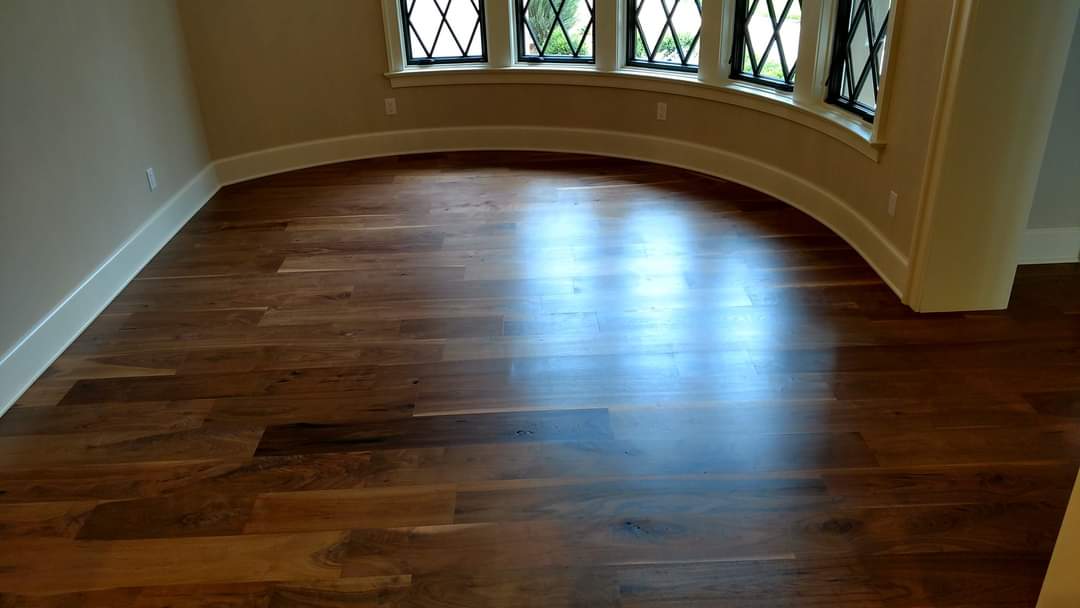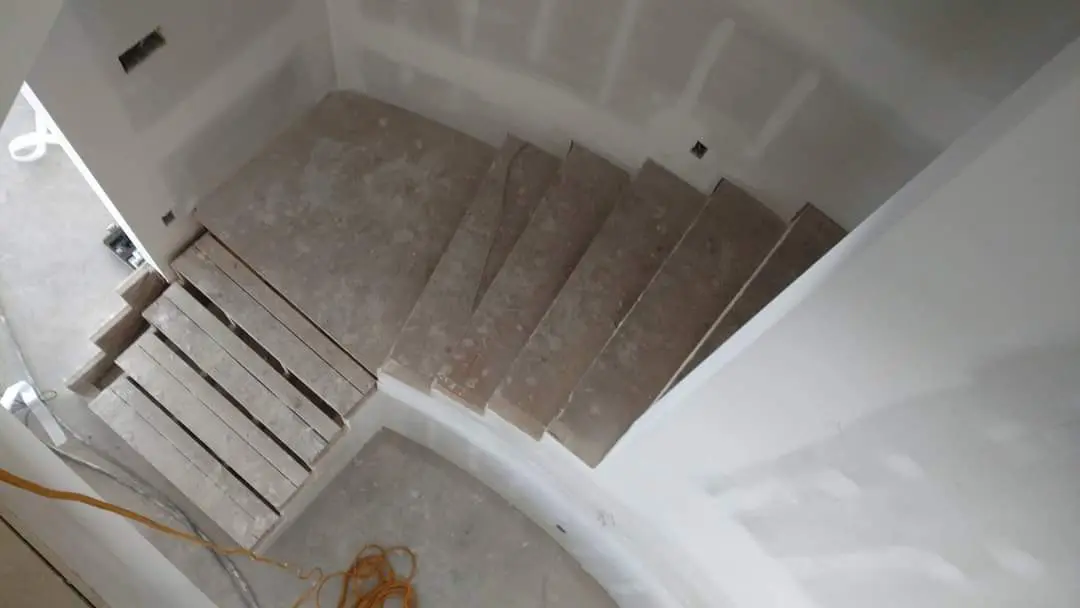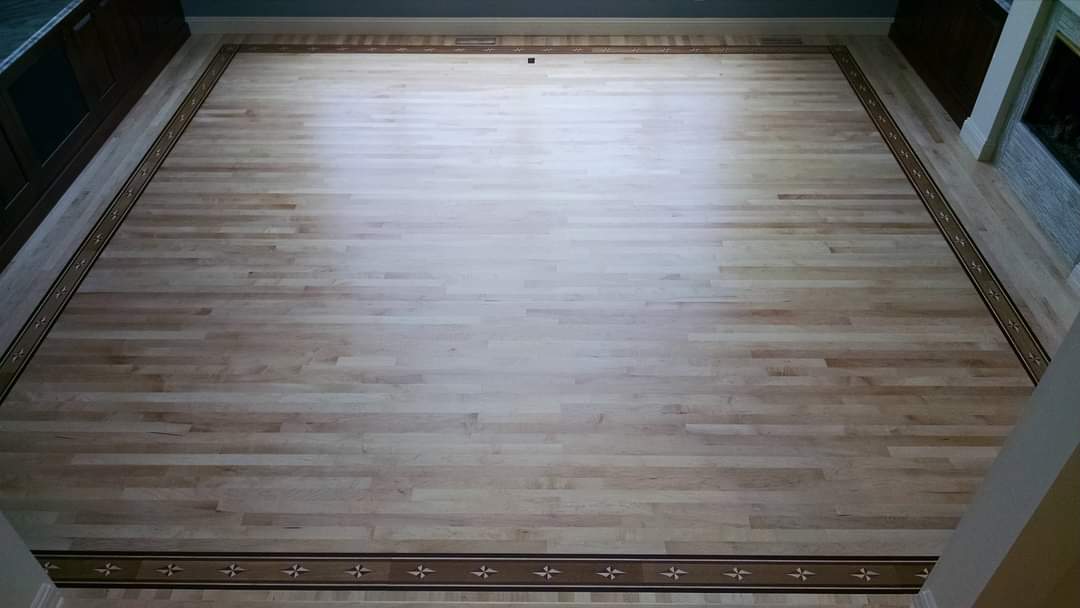
An Investment That Will Last for a Long Time
Hardwood Floors add Beauty and Elegance to Every Room in Your Home. Hardwood floors are an investment that will last for a long time with the proper installation and care. There are different modes of installation for engineered wood strips, solid wood strips, and parquet flooring.
With all modes of installation, moisture testing is imperative to ensure proper installation. Installing hardwood floors can be a painstaking process, but at Omni Wood Floors, we take pride in leaving your home looking as beautiful as we found it. Our expert technicians have seen every situation and are proficient in the three different types of installation for hardwood flooring.
Nail Down / Staple Installation
In this method, we nail down or staple solid or engineered wood strips to the subflooring (usually either plywood or plank wood). The floor is done with random length strips. A few strips are placed down and arranged prior to fastening to ensure proper placement and tautness.
Glue Down Installation
In this method, we glue down engineered wood flooring strips or parquet directly to the subfloor. In these cases, the subfloor is usually concrete, so we pay extra attention to moisture. With glue-down installations, it is important to consider any kind of allergies and sensitivities to smell. We use acrylic-based glue, which is milder than some of the other options. Glue-down installations can be walked on the next day, and furniture can also be moved in.

Refinishing
"Bring the Beauty Back to Life in Your Hardwood Floors."
Refinishing and sanding your hardwood floors is necessary to preserve their quality and beauty. Any refinishing wood floors are done solely to enhance the wood's natural color and protect it from the elements. The best time to sand and refinish your hardwood floors is when you move into a new house or apartment, as all of the furniture, rugs, etc., need to be removed from the area during the process. Proper wood floor refinishing should last about ten years. However, high-traffic rooms will need to be done more often. But the two types of floors.
Unfinished Hardwood Flooring
These come as solid wood floors and engineered wood floors, and both must be job-site finished. They come in varying lengths and widths. Sanding and finishing can take anywhere from a few days to a week, depending on size, stain, and the number of top finish coats. Generally, the finishes are oil or water-based. Our first priority is to protect the beauty of your home, so whether you have finished or unfinished floors, we section off other areas and furniture to prevent sanding dust from spreading throughout your home.
Our expert technicians also use dust containment systems to limit the amount of dust in the air. It is often referred to as dustless refinishing. And with refinishing, it is important to have as little airflow as possible in the area as airborne particles can become embedded into the newly applied finish. Something as simple as foot traffic or turning on the air conditioner/heating system can kick up dust. So it is better to allow more time to dry to avoid problem areas in your floors.


Pre-finished Hardwood Floors
These are the new mainstream products in hardwood flooring. They can be acrylic impregnated, engineered wood flooring, or solid hardwood floors. They have a tough factory finish, which is the main reason for its popularity. They are also extremely easy to install and eliminate the need for messy sanding.
Most pre-finished floors done within the last ten years are urethane finished. Test this by placing a couple of drops of water on an obscure area. If the area turns white after 15 minutes, you have a waxed finish. Older floors are likely to have shellac or varnish finishes. Unfortunately, these do not work well with the newer urethane finishes and must be completely removed if you want a urethane finish. There is also likely to be some amount of aluminum oxide in the newer pre-finished floors.
Floating Installation
In this method, we glue together the tongue and groove of every plank, and the floor floats over a foam cushioned padding. If the flooring has a locking system, we can lock the pieces together without glue. This can be used with either laminate or engineered wood floor, but either way, the flooring is pre-finished. Not all engineered surfaces can be floated. Floating floor installation can also be placed over subflooring of questionable quality, unlike the other two modes.
Also, floating floors are a great option if you have multiple layers of flooring and do not want to remove them all. And floating installation, The wear layer is important to consider as the thicker the layer, the more times it can be refinished. Generally, laminate flooring gives a hollow feeling underfoot with this mode of installation. Remember that floating floors expand and contract as a unit because the pieces of fused together. Allow for as much expansion area as possible.
